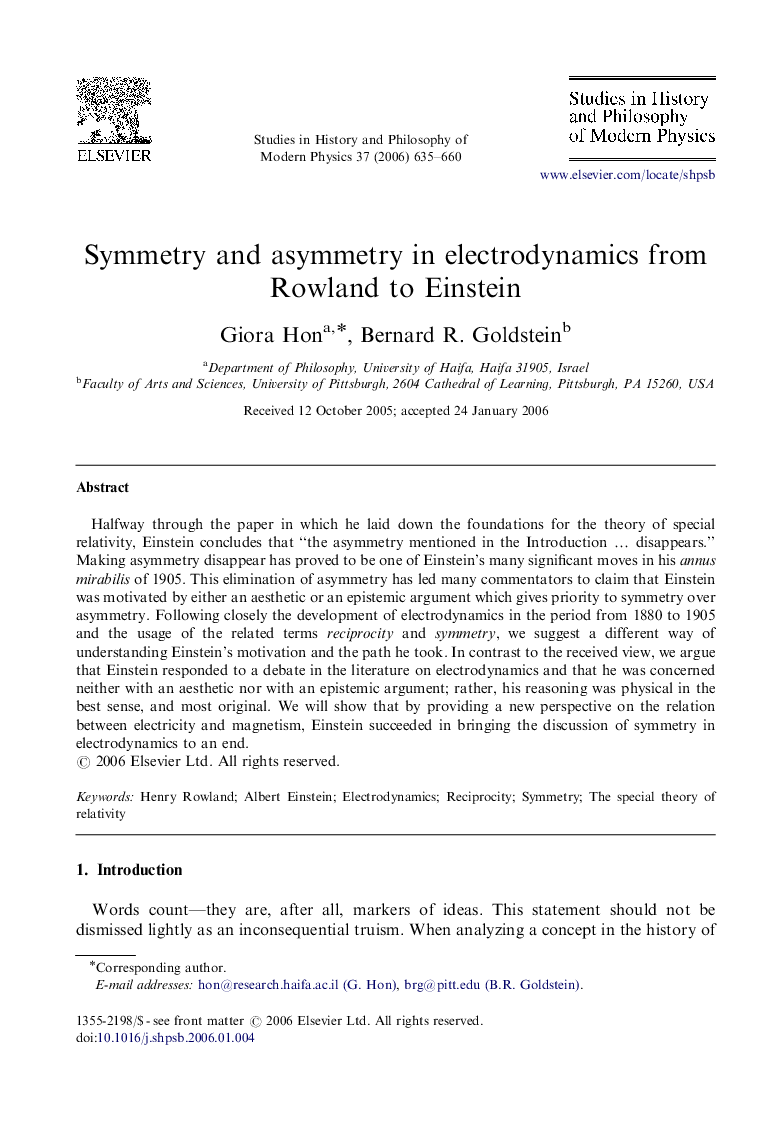| Article ID | Journal | Published Year | Pages | File Type |
|---|---|---|---|---|
| 1161692 | Studies in History and Philosophy of Science Part B: Studies in History and Philosophy of Modern Physics | 2006 | 26 Pages |
Halfway through the paper in which he laid down the foundations for the theory of special relativity, Einstein concludes that “the asymmetry mentioned in the Introduction … disappears.” Making asymmetry disappear has proved to be one of Einstein's many significant moves in his annus mirabilis of 1905. This elimination of asymmetry has led many commentators to claim that Einstein was motivated by either an aesthetic or an epistemic argument which gives priority to symmetry over asymmetry. Following closely the development of electrodynamics in the period from 1880 to 1905 and the usage of the related terms reciprocity and symmetry, we suggest a different way of understanding Einstein's motivation and the path he took. In contrast to the received view, we argue that Einstein responded to a debate in the literature on electrodynamics and that he was concerned neither with an aesthetic nor with an epistemic argument; rather, his reasoning was physical in the best sense, and most original. We will show that by providing a new perspective on the relation between electricity and magnetism, Einstein succeeded in bringing the discussion of symmetry in electrodynamics to an end.
